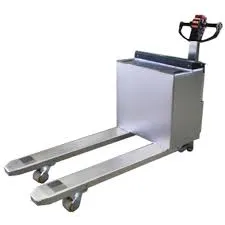


Understanding Chain Hoists A Comprehensive Overview
Chain hoists have become an indispensable part of many industrial and construction settings. These devices are designed to lift heavy loads efficiently and safely, making them a reliable choice for various applications. In this article, we will delve into the functionality, advantages, and considerations when using chain hoists, drawing insights from the relevant literature and technical resources.
What is a Chain Hoist?
A chain hoist is a mechanical device that utilizes a chain to lift and lower heavy loads. It typically consists of a chain, a lifting mechanism, and a hook or other attachment point for the load. Chain hoists can be powered by hand (manual) or by electric or pneumatic motors, allowing them to cater to different lifting requirements and environments.
Types of Chain Hoists
Chain hoists can be categorized into two main types manual chain hoists and electric chain hoists.
1. Manual Chain Hoists These require physical effort to operate. The user pulls on the chain to lift the load and releases it to lower the load. Manual chain hoists are often valued for their portability and simplicity and are commonly used in locations where electrical power is unavailable.
2. Electric Chain Hoists These are powered by electric motors, significantly reducing the manual effort required to lift heavy loads. Electric chain hoists are generally more efficient and allow for a higher lifting capacity, making them suitable for heavy industrial applications.
Advantages of Chain Hoists
Chain hoists offer numerous advantages over other lifting equipment
- High Load Capacity Chain hoists are capable of lifting substantial weights, making them suitable for heavy-duty tasks in construction, manufacturing, and warehousing
.
- Safety Most chain hoists come equipped with safety features, such as limit switches and mechanical brakes, ensuring that loads are securely held and reducing the risk of accidents.
- Versatility Chain hoists can be used in various environments, both indoors and outdoors, and can easily be adapted for different applications by changing hooks, slings, or add-ons.
- Cost-Effectiveness Compared to other lifting apparatuses like cranes, chain hoists are often more affordable while still providing excellent lifting capabilities.
Considerations When Using Chain Hoists
While chain hoists are incredibly useful, it is essential to adhere to safety and operational guidelines
- Weight Limit Always check the load limit of your chain hoist before lifting. Exceeding the maximum capacity can lead to equipment failure and accidents.
- Maintenance Regular inspection and maintenance are crucial to ensure the hoist functions properly and safely. Lubrication of the chain and examination of the lifting mechanism should be scheduled routinely.
- Proper Training Workers should be adequately trained on how to operate chain hoists, including how to perform safety checks before use.
- Environment Ensure that the operational environment is suitable for a chain hoist. Avoid working in hazardous locations, especially those that may expose the hoist to harsh conditions, water, or corrosive substances.
Conclusion
Chain hoists are vital tools that improve efficiency and safety in lifting heavy loads across various industries. By understanding the types of chain hoists available, their advantages, and the essential safety considerations, organizations can make informed decisions that enhance productivity while ensuring worker safety. The ongoing education and training regarding the proper use and maintenance of chain hoists will undoubtedly contribute to a safer and more efficient working environment.



